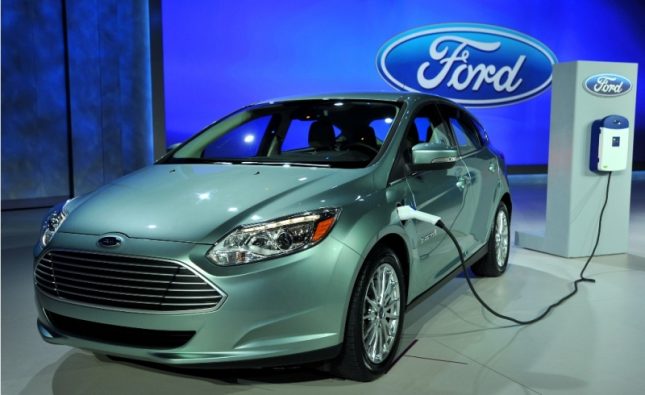
Introduction
In recent years, the automotive industry has witnessed a monumental shift towards sustainability and innovation, with electric vehicles (EVs) leading the charge. This transformation is not merely a trend but a fundamental revolution in transportation, promising cleaner, greener, and more efficient mobility solutions. In this article, we will delve into the future of electric vehicles, exploring their technological advancements, environmental benefits, and the evolving landscape of the automotive industry.
The Rise of Electric Vehicles

Electric vehicles have come a long way since their inception, evolving from niche novelties to mainstream contenders in the automotive market. The surge in EV popularity can be attributed to several factors, including advancements in battery technology, government incentives promoting cleaner transportation, and growing consumer awareness about environmental sustainability.
One of the primary drivers behind the rise of electric vehicles is the remarkable progress in battery technology. Lithium-ion batteries, which power most modern EVs, have witnessed significant improvements in energy density, charging speed, and overall performance. As a result, electric vehicles can now offer competitive range, charging times, and driving experience compared to traditional internal combustion engine vehicles.
Moreover, governments around the world are increasingly incentivizing the adoption of electric vehicles as part of broader efforts to combat climate change and reduce air pollution. Subsidies, tax incentives, and regulatory measures such as zero-emission vehicle mandates have helped make electric cars more affordable and accessible to consumers.
Technological Advancements
The future of electric vehicles is intertwined with rapid technological advancements that promise to further enhance their performance, efficiency, and convenience. One of the most anticipated developments is the emergence of solid-state batteries, which offer higher energy density, faster charging times, and improved safety compared to traditional lithium-ion batteries. Solid-state batteries have the potential to address some of the key limitations of current EVs, such as range anxiety and long charging times, thereby accelerating the transition to electric mobility.
Furthermore, advancements in electric drivetrain technology are enabling automakers to develop more efficient and powerful electric vehicles. Electric motors with higher torque density and regenerative braking systems are enhancing the driving dynamics and energy efficiency of EVs, making them increasingly competitive with their gasoline counterparts.
Another area of innovation in the electric vehicle sector is vehicle-to-grid (V2G) technology, which allows electric vehicles to serve as mobile energy storage units. By integrating V2G capabilities into EVs, owners can not only charge their vehicles but also sell excess energy back to the grid during peak demand periods, providing a valuable resource for stabilizing the electrical grid and reducing energy costs.
Environmental Benefits
One of the most compelling reasons for the widespread adoption of electric vehicles is their significant environmental benefits. Unlike conventional gasoline-powered cars, electric vehicles produce zero tailpipe emissions, thereby reducing air pollution and greenhouse gas emissions. According to studies, the widespread adoption of electric vehicles could lead to a substantial decrease in CO2 emissions from the transportation sector, helping mitigate the impacts of climate change.
Moreover, electric vehicles have lower lifecycle emissions compared to internal combustion engine vehicles, even when accounting for the emissions associated with electricity generation. As the share of renewable energy sources such as solar and wind continues to grow, the environmental footprint of electric vehicles is expected to further decrease, making them even more sustainable alternatives to traditional cars.
Challenges and Opportunities
Despite the many advantages of electric vehicles, several challenges remain that need to be addressed to accelerate their adoption and mainstream acceptance. Range anxiety, or the fear of running out of battery charge while driving, continues to be a barrier for some consumers, particularly in regions with limited charging infrastructure. Addressing range anxiety requires expanding the network of fast-charging stations and improving battery technology to increase range and reduce charging times.
Another challenge facing the electric vehicle industry is the high upfront cost of electric cars compared to their gasoline counterparts. While the total cost of ownership of electric vehicles is often lower due to lower fuel and maintenance costs, the initial purchase price can still be a deterrent for many consumers. Continued advancements in battery technology and economies of scale in manufacturing are expected to drive down the cost of electric vehicles over time, making them more accessible to a broader range of consumers.
Key Points Summary Table:
| Key Point | Description |
|---|---|
| Rise of Electric Vehicles | Explore the global trend towards electric vehicle adoption and its implications. |
| Cutting-Edge Technology | Delve into the latest innovations driving electric vehicle technology forward. |
| Environmental Benefits | Examine the environmental advantages of electric vehicles, including reduced emissions and energy efficiency. |
| Overcoming Challenges | Navigate the obstacles hindering electric vehicle proliferation and the strategies to overcome them. |
| Leading Innovators | Meet the pioneering companies and individuals at the forefront of electric vehicle innovation. |
| Green Future | Understand the role of electric vehicles in promoting sustainability and mitigating climate change. |
| Future Trends | Anticipate the upcoming trends and developments that will shape the future of electric vehicles. |
Comparative Table:
| Feature | Electric Vehicles | Internal Combustion Engine Vehicles |
|---|---|---|
| Emissions | Zero tailpipe emissions | Emissions from combustion process |
| Fuel Efficiency | High efficiency, lower energy costs | Relatively lower efficiency |
| Maintenance | Fewer moving parts, lower maintenance | More complex maintenance requirements |
| Noise Pollution | Quieter operation | Engine noise pollution |
| Environmental Impact | Reduced carbon footprint | Higher environmental impact |
| Charging Infrastructure | Developing rapidly | Established refueling infrastructure |
Conclusion
The future of transportation is electric, and the revolution is already underway. Electric vehicles are reshaping the automotive industry, offering cleaner, greener, and more sustainable mobility solutions for the future. With ongoing technological advancements, growing environmental awareness, and government support, electric vehicles are poised to become the mainstream choice for consumers worldwide. As we embark on this electrifying journey, the road ahead is filled with promise, innovation, and endless possibilities.










